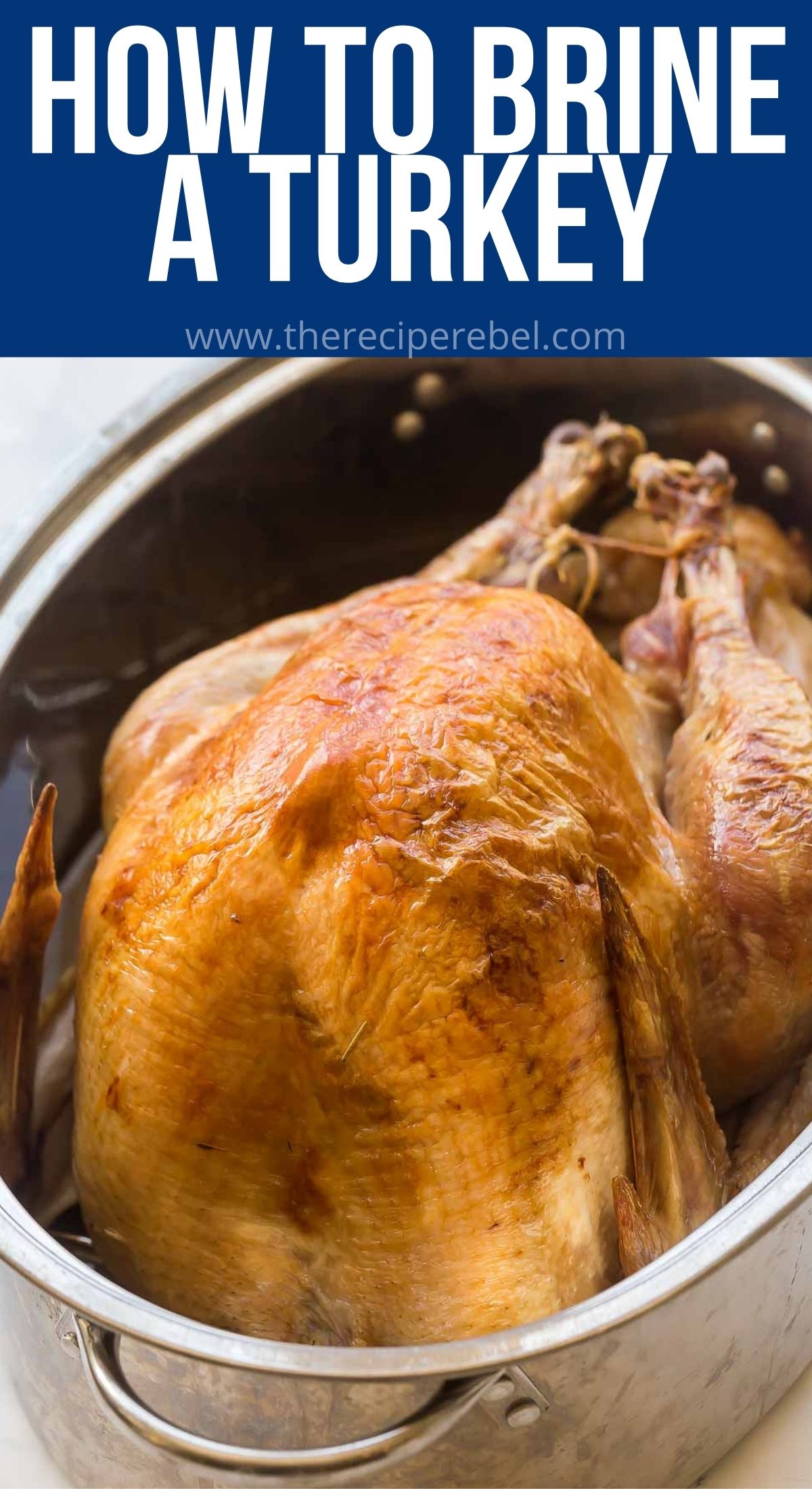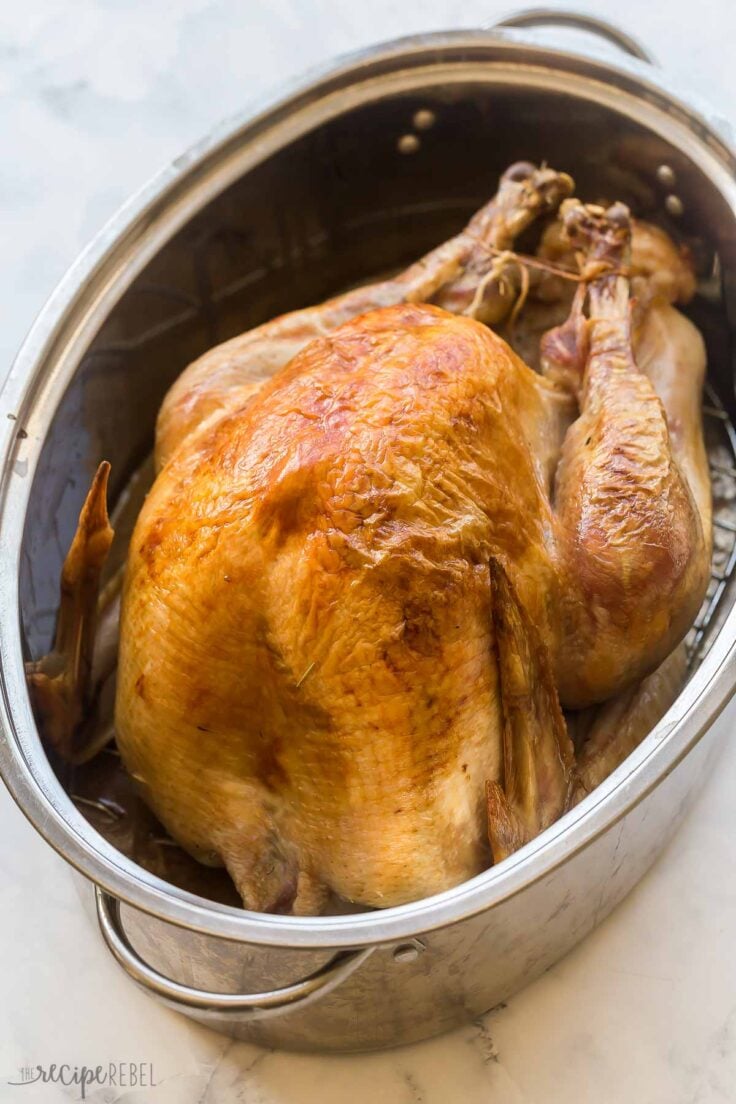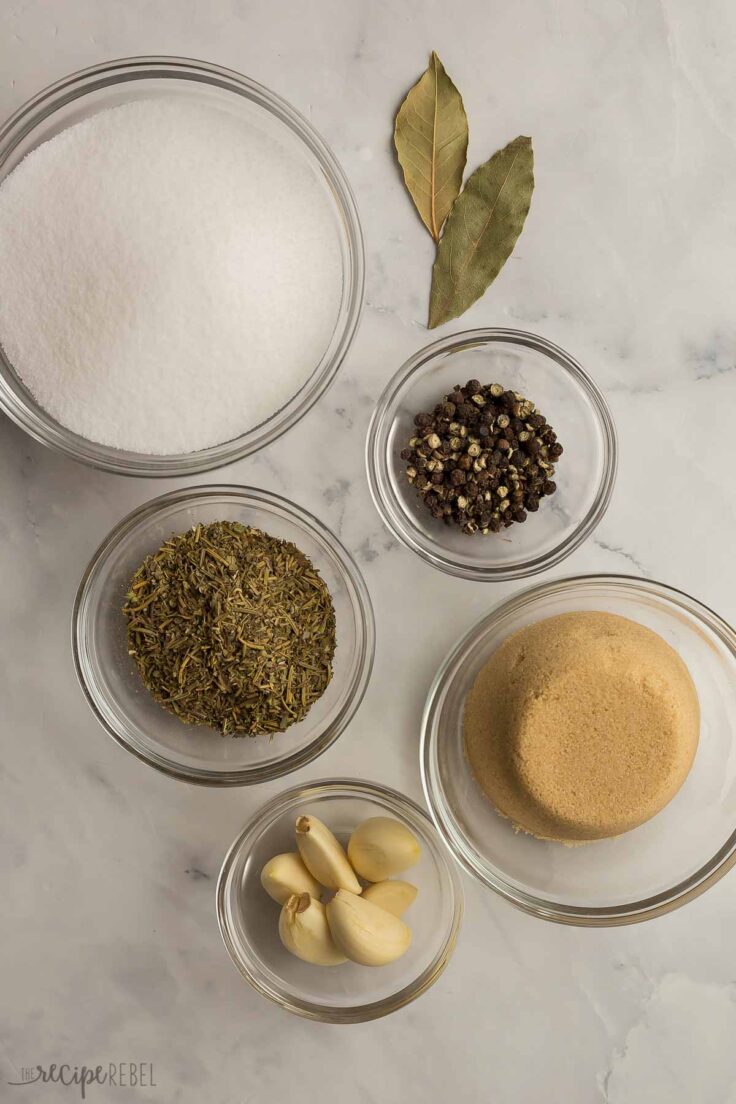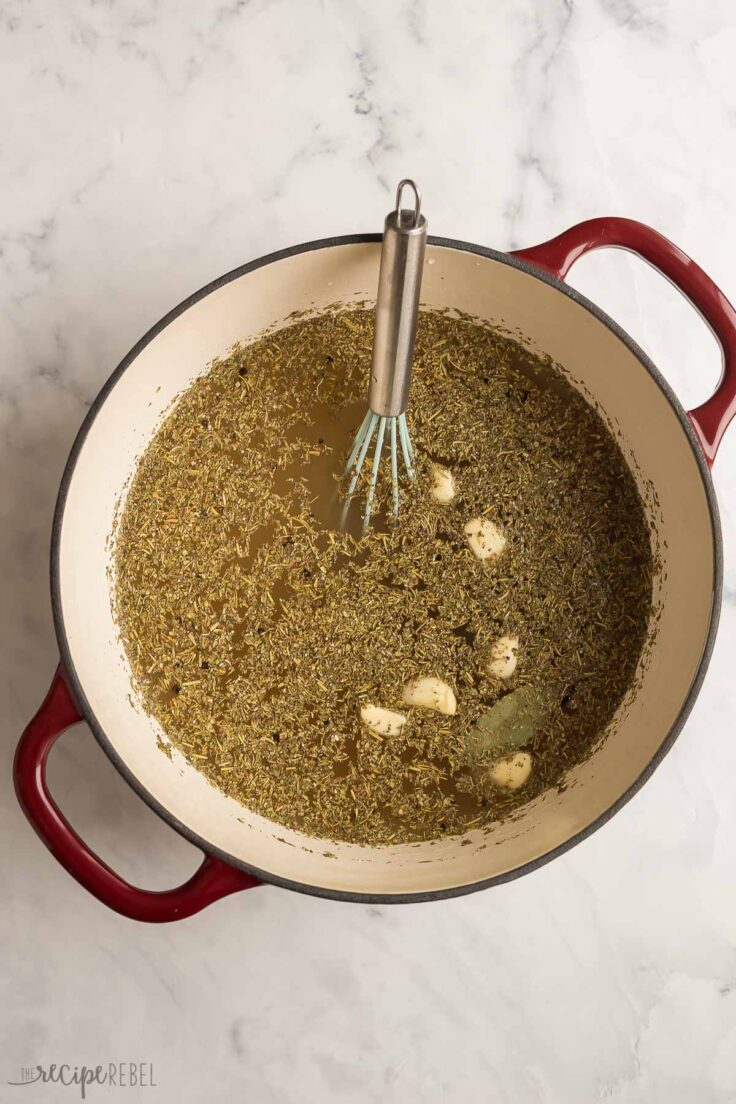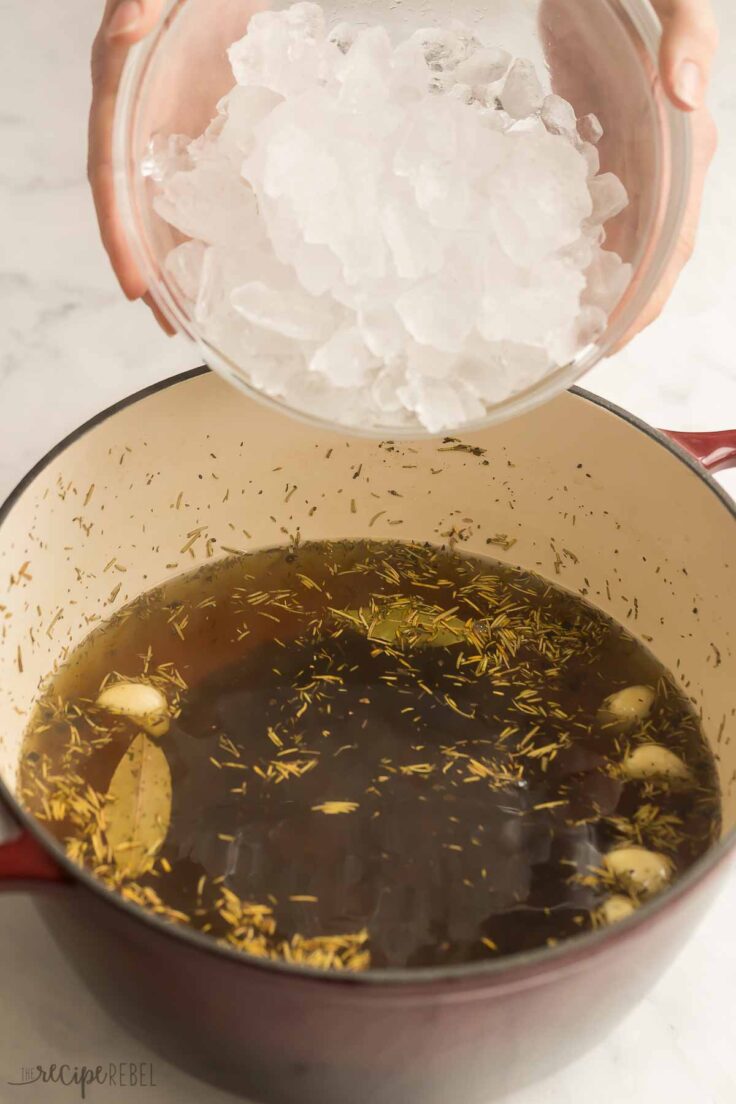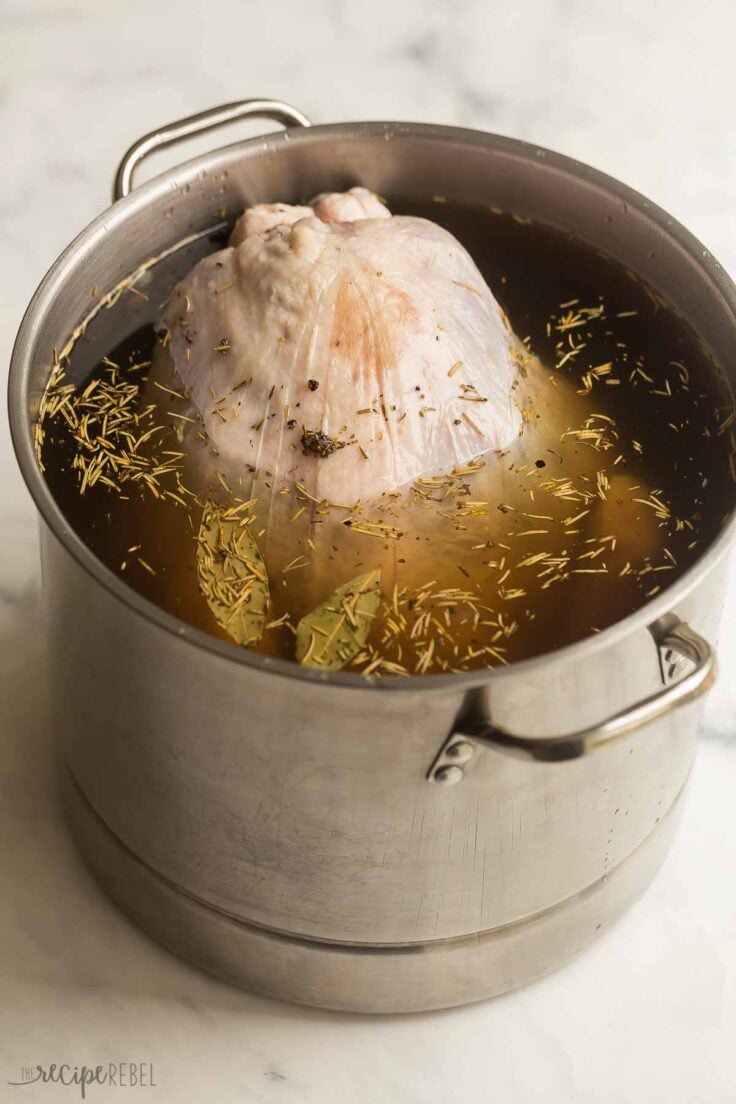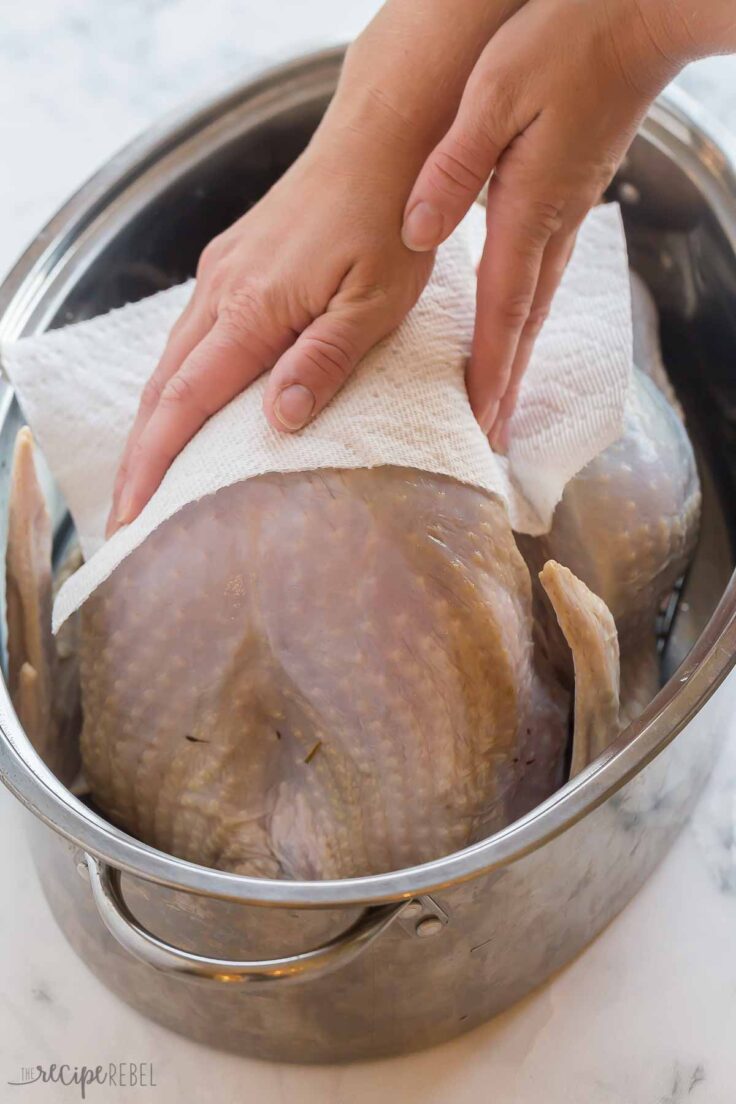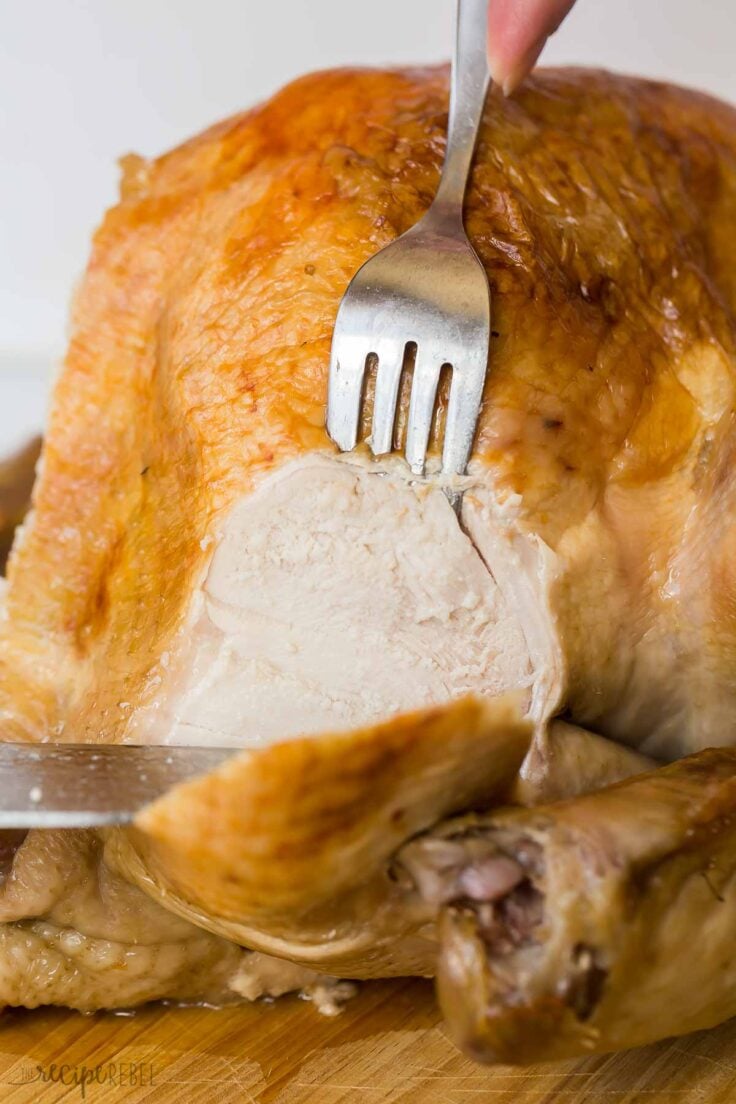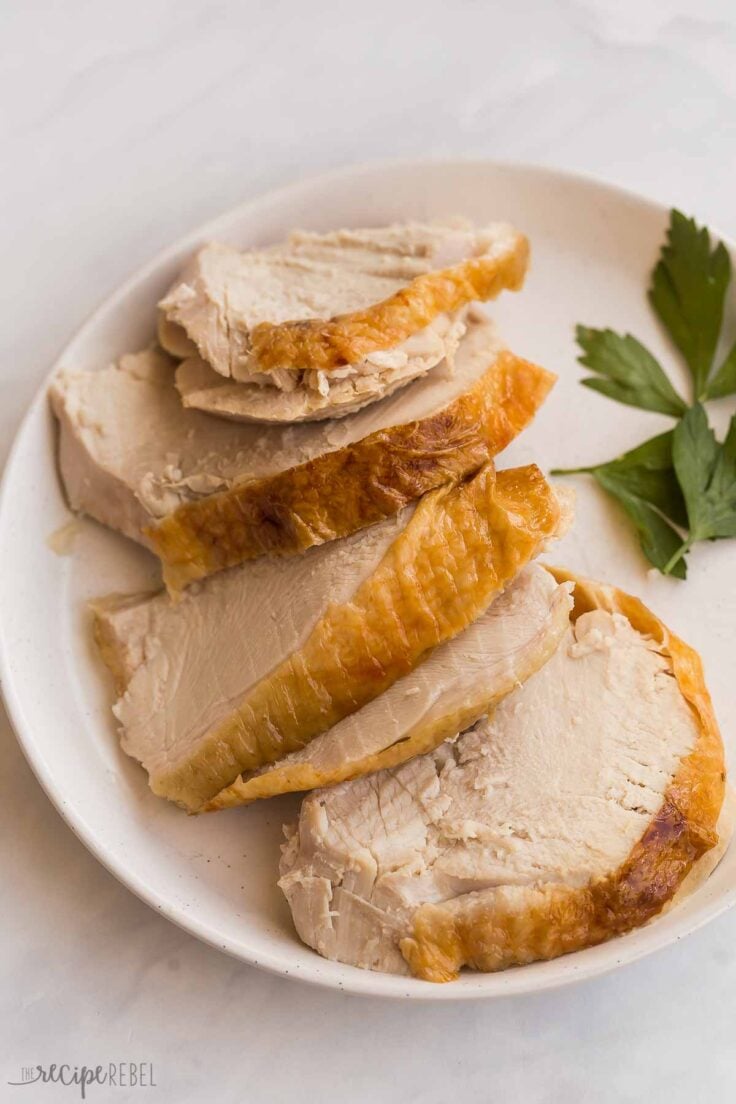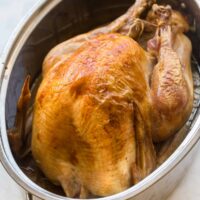Have you ever spent hours laboring over your big holiday turkey dinner only to end up with dry turkey? Have you wondered where you could have gone wrong and why you just can’t seem to get the perfect roast turkey every time? Wonder no more! This turkey brine is exactly what you need to take your turkey from good (or not so good) to great. It adds tons of moisture and flavor to a turkey and makes it so much easier to knock holiday cooking out of the park. Who knew an extra 10 minutes of prep could make such a big difference? Want to try a dry brine? Check out my Garlic Brown Sugar Dry Brine Turkey.
What is turkey brine?
A brine is a liquid in which meat is soaked over a long period of time so it can absorb moisture and flavor. In its simplest form, brine is made up of water and salt. However, a brine can contain other ingredients such as herbs and spices to add even more flavor to the meat. This turkey brine recipe is a saltwater mixture, but it also contains flavorful spices, herbs, brown sugar, and butter. It’s a simple recipe that will take any turkey to the next level!
Turkey brine ingredients:
Water and Table Salt: the base for the brine. You’ll use 1 cup of salt for an 11-12 pound turkey, which is what I used, but if you have a smaller turkey I recommend reducing the salt to ¾ cup. Brown Sugar: adds a delicious warm, caramel-y sweetness to the meat. Italian Seasoning and Black Peppercorns: a simple blend of seasonings that gives the turkey tons of flavor. The Italian seasoning provides warm, earthy, subtly sweet tones while the peppercorns add a kick of spice. Garlic: there’s no need to mince the garlic first. The brine helps break down the cloves so you still get all that flavor. Bay Leaves: infuses the turkey with a subtle minty flavor and also helps to enhance the other flavors within the brine. Ice Water: helps quickly cool down the brine. Make sure the brine is fully cooled before adding the turkey. You can start with 1 ½ gallons, but add more ice as needed until it has fully cooled. Unsalted Butter: melted and brushed on the outside of the turkey after brining to give it that golden-brown finish. Make sure you use unsalted butter. The brine gives the turkey plenty of salt. Turkey: I use an 11-12 pound turkey for this recipe.
How to brine a turkey
This turkey brine recipe really couldn’t be easier! Just 10 minutes of extra time for a perfectly moist, extra flavorful turkey? Count me in.
Why should you brine a turkey?
There are a few different reasons why you should brine your turkey…and yes, it is worth it!
Texture: Turkey is naturally lean meat, meaning since there isn’t a lot of fat it’s more prone to drying out than other types of meat. Brining it gives it an opportunity to soak in more moisture which results in a juicier, more tender turkey. It also gives you a bit of a moisture cushion if you accidentally overcook it a bit. An overcooked turkey that hasn’t been brined is much more likely to be dry. Flavor: Soaking the turkey in brine for a long period also allows the seasonings to soak in so you get great flavor throughout the turkey, not just on the surface. Exterior: The salt in the brine changes the texture of the skin, so when you cook it, you end up with that crispy, golden-brown look.
How long to brine a turkey
This depends on the size of the turkey, but I recommend 12-18 hours for an 11-12 pound turkey, which is what I used in this recipe. If you are going to brine your turkey for more than 18 hours, I would reduce the amount of salt from 1 cup to ¾ cup so it doesn’t become too salty. I also wouldn’t let the turkey sit in the brine for more than 24 hours. If it sits in the solution too long, you’ll end up with meat that is too salty and the texture may become spongy.
Does turkey need seasoning after brining?
Nope! The brine adds plenty of flavor to the meat. The only thing you’ll add after you brine the turkey is melted butter so the skin can get that golden, crispy finish.
Tips and tricks for making turkey brine
Fully submerge the turkey. Be sure that the brine completely covers the turkey in the pot. You can add water if necessary until it’s totally submerged. If you don’t have a pot big enough you can use a (very thoroughly cleaned) cooler or a turkey brine bag. Cool the brine completely. You want the turkey and the brine to be in the same temperature range when you start the brining process. You can let the brine sit at room temperature to let it cool or add more ice cubes until it has reached the right temperature. Rinse it. After you brine it, be sure to rinse the turkey to remove any excess salt. Dry it. Before you cook your turkey, pat it dry and let it sit for 1 hour at room temperature. The dryer it is after brining, the crispier and more golden-brown the skin will be. Start at a high temp. The first 20 minutes at 425ºF gives the skin a chance to get crispy while the 2-2 ½ hours at 350ºF allows the turkey cook all the way through. Let it rest. After it’s done cooking, let the turkey rest for 30-60 minutes before slicing into it. In that time, the moisture and flavor will settle back into the meat. If you slice into it too soon, all of that moisture will seep out.
What to serve with turkey
Here are a few of my favorite side dishes to serve with roast turkey!
Mashed Potatoes Mom’s Homemade Buns — a family favorite! Honey Glazed Carrots Cheesy Scalloped Potatoes and Ham
Can brine be made ahead of time?
Yes! To prep your brine ahead of time, you can simmer the aromatics in the water as directed, then cool the brine fully and store it in the refrigerator for up to 2 weeks.
How to store cooked turkey
To store leftover cooked turkey, portion it out into smaller pieces, then store it in the fridge for 3-4 days or in the freezer for 3-4 months. To reheat, thaw in the fridge if frozen, then microwave or warm in the oven until heated through.
More turkey recipes:
Roast Turkey Breast with Cranberry Marinade Sous Vide Turkey Breast & Apple Cider Gravy Turkey Pot Pie Crockpot Turkey Breast
Create an account easily save your favorite content, so you never forget a recipe again. Register Now Tag @thereciperebel or hashtag #thereciperebel — I love to see what you’re making!
